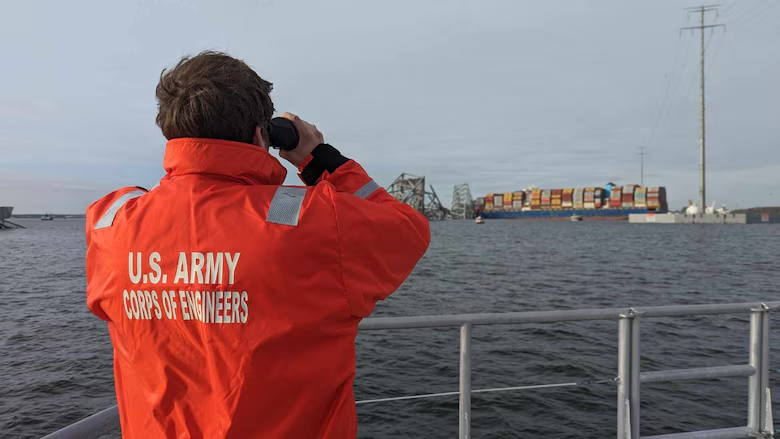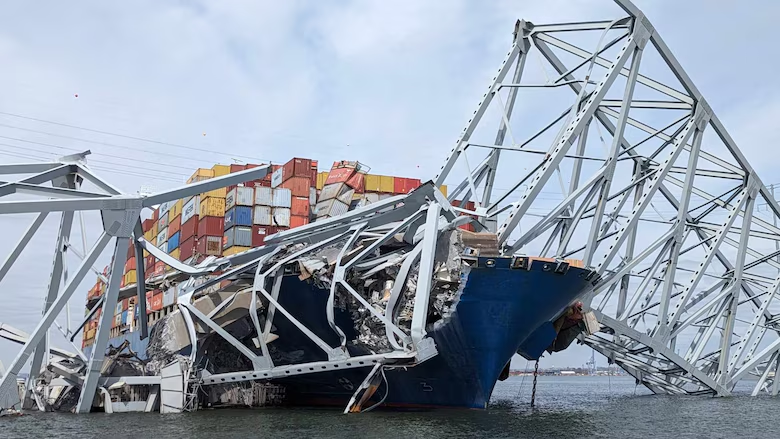
The U.S. Army Corps of Engineers (USACE) in Baltimore District has activated its emergency operations center, clearing the way for more than 1,100 engineering, construction, contracting and operations specialists to provide support to local, state and federal agencies following the collapse of the Francis Scott Key Bridge, March 26, 2024.
In accordance with USACE’s federal authorities, USACE will lead the effort to clear the channel as part of the larger interagency recovery effort to restore operations at the Port of Baltimore.
“Our thoughts are with those impacted by the tragic collapse of the Francis Scott Key Bridge,” said Baltimore District Commander Col. Estee Pinchasin. “Our Emergency Managers are closely monitoring the incident and coordinating with partner agencies for any potential support requests.”
The U.S. Army Corps of Engineers also said that together with local, state, and federal partners, they are working closely to determine the key actions required to remove the fallen bridge.
The USACE is providing certified underwater assessment capabilities by structural professional engineers, remotely operated vehicle and sonar.
In addition to underwater assessments, the USACE is providing structural engineering support, including certified bridge safety inspectors and urban search and rescue structural technical specialists.
This support also encompasses waterway debris management, led by USACE debris removal vessel REYNOLDS, which patrols the waters of the Baltimore Harbor and Patapsco River for drift and debris that could be hazardous to navigation.
USACE is also poised to provide to the joint response hydrographic and topographic surveying via the CATLETT, a 61-foot survey vessel that actively supports the Baltimore district’s navigation branch, whilst additional USACE vessels are prepared to join efforts as needed for waterway debris management.
Baltimore district operates and maintains more than 290 miles of federal navigable channels within the Susquehanna River watershed, including the Fort McHenry channel.
Source: US Army Corps of Engineers



